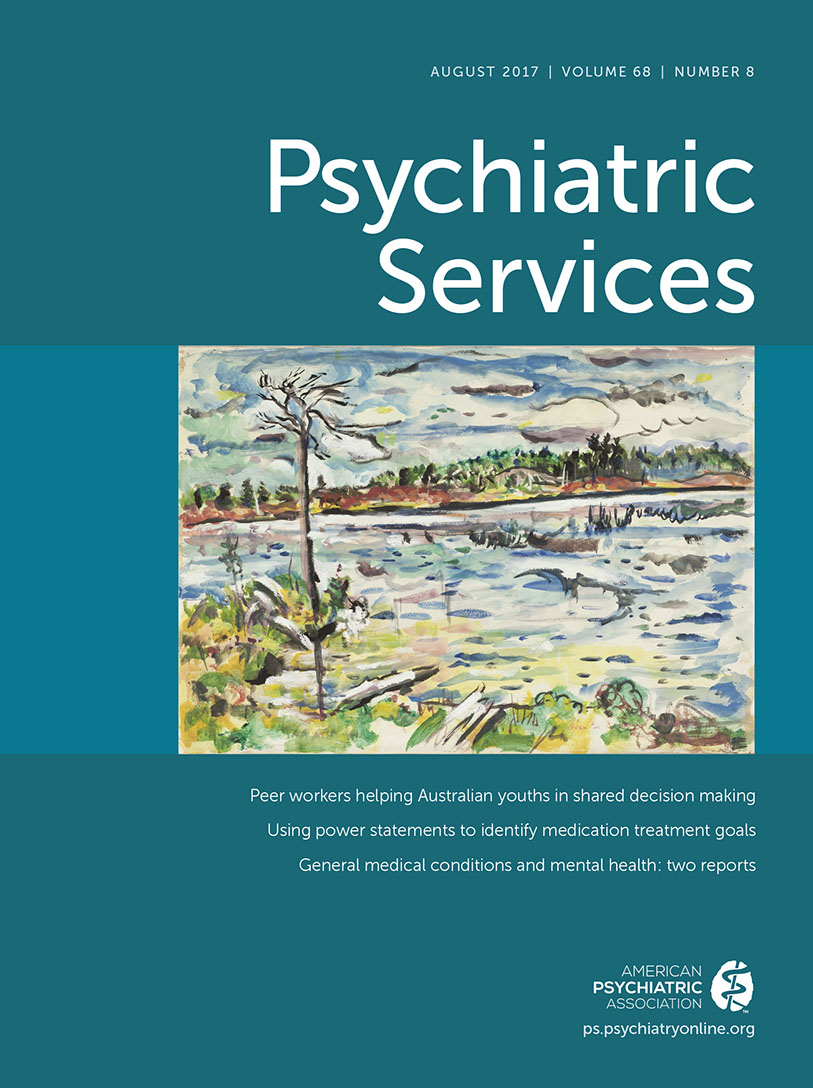Premilitary Trauma as a Correlate of Suicidal Ideation Among Veterans
Suicide research among veterans has focused on military-related factors, but preservice factors may be equally important (1). We examined whether adverse childhood experiences (ACEs), which are strongly associated with suicidal ideation (2), were associated with recent suicidal ideation among veterans.
On the 2012 Tennessee Behavioral Risk Factor Surveillance System, veterans (N=558) indicated whether they had considered taking their own life in the past 12 months and how many of up to nine ACEs they had experienced. We used multiple logistic regression to examine the independent association of ACEs with recent suicidal ideation, adjusting for sociodemographic variables; lifetime diagnoses of depression, anxiety, or posttraumatic stress disorder; receipt of psychological or psychiatric counseling or treatment in the past 12 months; lifetime traumatic brain injury (TBI) diagnosis; and combat service.
Prevalence of ACEs ranged from 10% for sexual abuse to 33% for household alcohol abuse; 20% experienced four or more ACEs. Approximately 8% of veterans indicated recent suicidal ideation. ACEs were significantly associated with recent suicidal ideation both before (odds ratio [OR]=1.41) and after adjustment for covariates (AOR=1.57) (Table 1). Serving in a combat zone and TBI were not significantly associated with recent suicidal ideation.
| Crude analysis (N=556) | Adjusted analysis (N=540)b | |||
|---|---|---|---|---|
| Variable | OR | 95% CI | AOR | 95% CI |
| Adverse childhood experience | 1.41 | 1.04–1.91 | 1.57* | 1.09–2.27 |
| Ever served in a combat zone | — | — | .34 | .10–1.21 |
| Ever received diagnosis of traumatic brain injury | — | — | .17 | .03–1.00 |
| Ever received diagnosis of depression, anxiety, or PTSD | — | — | 9.26* | 2.33–36.76 |
TABLE 1. Association of adverse childhood experiences (ACEs) with past-12-month suicidal ideation among U.S. veteransa
The association of ACEs with suicidal ideation, which supports a Canadian report (3), is remarkable for its significance after adjustment of relevant covariates and because it is chronologically more distal than military-related factors.
Suicide prevention efforts among current and former military personnel should include awareness of preservice trauma. Cumulative trauma histories may inform treatment decisions for select diagnoses or strategies for addressing suicide risk during periods of increased stress.
1 : Predictors of suicide and accident death in the Army Study to Assess Risk and Resilience in Servicemembers (Army STARRS): results from the Army Study to Assess Risk and Resilience in Servicemembers (Army STARRS). JAMA Psychiatry 71:493–503, 2014Crossref, Medline, Google Scholar
2 : Disparities in adverse childhood experiences among individuals with a history of military service. JAMA Psychiatry 71:1041–1048, 2014Crossref, Medline, Google Scholar
3 : Association of child abuse exposure with suicidal ideation, suicide plans, and suicide attempts in military personnel and the general population in Canada. JAMA Psychiatry 73:229–238, 2016Crossref, Medline, Google Scholar



